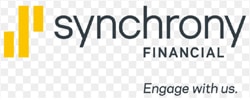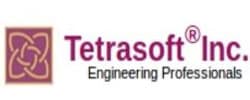MSBI Training In Hyderabad
In This Page You Get Complete Details About MSBI Training In Hyderabad, Scroll Down To Know More.
what is MSBI ?
Microsoft® Business Intelligence (MSBI) is a suite of tools that provides data visualization and analysis capabilities.Microsoft Business Intelligence is designed to help organizations make better decisions and take action in order to support their business goals. It can be used by both IT professionals and end users alike.Microsoft Business Intelligence is a solution for business intelligence and analytics. It provides insights into the data that helps to make decisions with confidence.
MSBI includes four components that are integrated to provide a comprehensive BI solution:
– SQL Server®
– Analysis Services
– Reporting Services
– Integration Services

Advantages Of MSBI:
- Microsoft BI allows users to analyze and visualize data from sources such as text files, relational databases, or web-based reports.
- The software includes an interactive dashboard builder that can be customized to suit the needs of each user.
- The BI suite allows business users to create reports, dashboards, and scorecards from a variety of data sources.
- It also provides the ability to share insights with other users through collaboration tools such as SharePoint or OneDrive for Business.
- One can also create dashboards with Microsoft BI which are interactive and can be shared with others.
- Microsoft BI is a suite of business intelligence tools that is used for data analysis, exploration and visualization.
- It has a user-friendly interface which makes it easy for anyone to use Microsoft business intelligence without having any prior experience with it.
- It can help in making better business decisions
- It can provide data to support decision making
- It provides insights into what is happening in your company and the industry
- It can help you identify opportunities for improvement
MSBI Training In Hyderabad
Call: +91 6209880988
Register For MSBI Training In Hyderabad
Why MSBI Training In Hyderabad With Vinay Tech House ?
A comprehensive training resource that includes real-time training scenarios for every area of study using the MSBI Training solutions.
* We also provide cases studies to support MSBI training.
* We plan sessions according to your preferences by highly skilled and trained experts in real-time.
* We record a session to be used for reference in the future.
* We also offer an ongoing, quick and weekend-long course to provide the online Power BI Training.
* We also offer lucrative and flexible payment plans that are flexible and profitable.






MSBI Training In Hyderabad
Frequently Asked Questions
What is MSBI and What are it's uses?
Microsoft Business Intelligence is a suite of tools and services that provides organizations with the ability to turn data into insights and drive better decision making. It includes features such as data warehousing, data modeling, data analysis, reporting, and dashboard creation.
The platform leverages familiar Microsoft tools, such as Excel and PowerBI, making it easy for users to access and utilize their data. By incorporating machine learning and natural language processing, Microsoft Business Intelligence can deliver real-time insights and predictions, helping organizations stay ahead of the competition.
Is MSBI easy to learn?
MSBI can be considered easy to learn for individuals with prior experience in Microsoft products and data analysis. The platform leverages familiar tools such as Excel and PowerBI, making it user-friendly for those who have used these programs.
However, the depth of knowledge required may vary depending on the specific area of MSBI being used (e.g. data warehousing, data modeling, reporting, etc.). It is also helpful to have a background in SQL, data analysis, and database design to fully utilize the capabilities of MSBI. Overall, MSBI can be considered an accessible platform for those who are willing to invest the time and effort to learn it.
Does MSBI have a market?
Yes, MSBI has a promising future. As the volume of data being generated by organizations continues to grow, the need for effective and efficient data analysis and reporting will only increase. Microsoft has made significant investments in its business intelligence offerings, and has a strong commitment to continue improving the platform.
The integration of AI and machine learning in MSBI provides organizations with the ability to derive insights and make predictions in real-time, making it a valuable tool for businesses in a variety of industries.
Additionally, MSBI's integration with the broader Microsoft ecosystem, including cloud-based services and collaboration tools, provides organizations with a comprehensive solution for data analysis and decision making. Given these factors, it is likely that MSBI will continue to be a popular and valuable platform in the future.
What type of study materials and videos we will get and how long they are available?
You Get Very Step By Step Material & Recorded Video For Your Further Understanding. It Will Available For You Upto 1 Year Long.
What tools are included in MSBI?
MSBI includes data warehousing, data modeling, data analysis, reporting, and dashboard creation, among others.
How does MSBI differ from other BI platforms?
MSBI leverages familiar Microsoft tools and integrates with the broader Microsoft ecosystem, making it accessible and user-friendly for individuals with prior experience in Microsoft products. Additionally, MSBI incorporates machine learning and natural language processing to deliver real-time insights and predictions.
What are the prerequisites for learning MSBI?
Prior experience with Microsoft products and data analysis, as well as a background in SQL, data analysis, and database design can be helpful in fully utilizing the capabilities of MSBI.
What if I miss a training session?
No Worries, We Do Share Daily Recorded Videos To You.
Which Is The Best Institute For MSBI Training In Hyderabad ?
No Doubtedly, Vinay Tech House Is Best MSBI Training In Hyderabad.

Growth of the Field
There Is a Huge Potential On This Technology Because Of Business Have Huge Data.

Industry worth 18k cr
This Is One Of The Fast Growing Technology

62k + Job Oppurtuities
Numerous Job Opportunities On MSBI, Learn MSBI Training In Hyderabad at Vinay Tech

Earn 13 L.P.A +
Get Very High Package Than Your Current CTC
MSBI Training In Hyderabad
IT Data Fundamentals & MSBI Existence
- Data, Data Availability in IT
- Data, Data Availability in IT
- IT data storage areas
- Datawarehouse, BI definitions and layers
- MSBI existence in IT, Product services
- MSBI Tools and Components
- MSBI Opportunities
MSBI and Competitiveness
- What are BI, MSBI, and SSBI? Importance in the current Enterprise?
- Competitive advantages
- MSBI vs Other BI tools
- MSBI 2016 Vs Others (2014, 2012, 2008, 2005)
- Hardware & Software requirements
- Instances and installation methods
Tools & Utilities to work with MSBI
- SSDT, BIDS, SSMS, DQS Client / Server / Installer
- Sqlserver Profiler, Deployment Wizards
- Command Line Utilities
- a) DTUTIL b) DTUTILEXEC c) RS RSCONFIG d) ASCMD etc…
Data warehousing fundamentals
- Data definitions (Data, Information, BI, Mining, ODS, DSS, Analysis, OLTP, OLAP, OLCP)
- Dwh Characteristics, Principles
- Dwh approaches (Top down/Bottom up)
- Dwh Life Cycle steps
- Data Mart & Types
- Data Processing Types (OLAP)
- Granularity and various granularities
- Diff between OLTP and OLAP
Dimensional Modeling Fundamentals
- Dimension, Dimension Table & types
- Fact, Fact Table & measures types
- Fact less fact table
- Various schemas (Star, Snow Flake, Galaxy & Hybrid )
- Surrogate key and usages in real time
- Model, Business, Conceptual, Logical, Physical Data Models
SSIS in real-time projects (DWH and OLTP)
- SSIS resources in the BI and Non BI projects
- SSIS collaboration with other DWH tools
- SSIS strengths than contemporary ETL tools
- SSIS installation (SSDT, SSMS) and observation
- SSIS real time projects flow and explanation
- SSIS Development / Support responsibilities
- SSIS Testing, Deployment, Versioning, Scheduling, Defect Handling
- Normalization vs demoralization in DWH
- Dimensional Model (Facts & Dimensions)
SSIS-2016 Logical & Physical Architectures
- What is SSIS? Detailed logical architecture and components
- SSIS-2016 newly added features, disconnected features, enhancement and break down features
- SSIS strengths than contemporary ETL tools
- SSIS Practical architecture, Solution, Project and Package creations and executions
- Connection Managers, Shared Data Sources,
- Parameters(2012,2014,2016)
- Discussion on new Features in SSIS 2016
- Balanced Data Distributor,
- OData v4 data sources & and Bug Fixes
- Data Feed Publishing Components
SSIS resources and responsibilities ETL operations in SSIS (Data Flow Task) (Extract, Transform and Load)
- Objective of Dataflow and process flow
- In memory model and performance tips
- Aggregate, Data Conversion, Derived column, Character Map, Audit
- Merge, Merge Join, Union All, Sort
- Multicast, Conditional Split, Oledb command
- Lookup, Fuzzy lookup, Copy column
- Pivot, Un pivot, Term Extract, Term Lookup
- CDC, Data Cleansing, Script Component
- Checksum transformation (2014) real usage
Implementing SCDs, CDC in DWH using restarts, transactions and data tracking
- Using Check points to configure restarts and preserve operations
- Transactions for historical and business evaluations
- Implementing Slowly Changing Dimensions in Data warehouse using No, Full and Partial chches
- history tracking of dimension (Type1)
- Full history track and methods (Type2)
- Partial history track and need (Type3)
- Manual Implementation of SCDs, Incremental (Delta) Loading
- Change data capture in data warehouse tables for the events insert, update and delete on OLTP
Versioning and scheduling in DWH projects
- SSIS versioning, other versioning tools
- SSIS Scheduling, other versioning tools
- Jobs, Proxy and Sqlserver agent account
SSIS ETL, Windows and Sql Server Admin tasks (Control Flow Tasks and Operations)
- Looping usages (For Each loop, For loop) and various scenarios (Files, Datasets, XMLs, Excels)
- Transactional operations and Parallel processing implementation using Sequence container
- Using File System to move, copy, create folders
- Execute Sql for Single, Multi SQL, Procedure, functions with Various parameters and implementing DML, DDL statements
- Working on Master, Child Packages using Execute Package task and variables
- Expression task for evaluations, iterations
- Using Script task for customized operations
- Execute process task for Zip, Exe Operations
- Profiling and cleansing the data using Data Profiler, DQS cleansing operations
- Controlling tasks using Precedence Constraints
Data Loading, Fact and Dimensions load
- Direct load and components (Truncate & Load)
- Fast load implementation in SSIS
- Incremental load in warehouse tables
- Wizards, Tools, Tasks for different types of load
Debugging, Logging and Event handling
- Trouble shooting and Bottlenecks identification using DataViewer, BreakPoint, Hit count debug methods
- Real time Logging, usages and observations
- Log Providers and Catalog Logging
- Implementing Basic, Verbose and Performance
- Event vs Error Handling, real time handling
Command Line Utilities Utilization
- Various environments operations of packages using a) DTUTIL b)DTEXECUI c) DTEXEC
Configurations and Parameters in DWH
- Various ways of configuring SSIS packages (Legacy)
- User interactions to the packages for incremental load
- Parameters and environments in Catalog Database
Security, Deployment in real time projects
- Security in various ways (Password protection & Role based security), DBA role in security
- U Package deployment using manifest file (File System, Sqlserver deployment)
- Project deployment using Catalog database (SSDB) and explaining various features
Bottlenecks, Performance Tuning
- Production issues in real time, other pkg issues
- Bottleneck, various ways to identify bottlenecks
- Tuning Source, Destination, Transformation,Packageand System level
- Data pipeline optimization, in memory model
- Execution trees, memory buffer optimization
SSAS in real-time projects (DWH & BI)
- SSAS resources in the BI projects
- SSAS collaboration with other DWH tools
- SSAS strengths than contemporary tools
- SSAS installation (SSDT, SSMS) and observation
- SSAS real time projects flow and explanation
- SSAS Development / Support responsibilities, SSAS Processing
- SSAS Testing, Deployment, Versioning, Scheduling and Defect Handling
- Normalization vs demoralization in DWH
- Dimensional Model (Facts, Dim) process
BISM (Business Intelligence Semantic Model) role in analysis and data mining
- SSAS 2016, 2014 and 2012 discussions
- Installation of SSAS, Analysis Modes
- Multidimensional model and real time usage
- Tabular mode and real time usage
- Power Pivot and real time usage
- Over view of SSBI,Multidimensional Model, Tabular Model and Power Pivot
- Power Pivot for Excel and Share Point
- What is OLAP, Types of OLAP (MOLAP, ROLAP, DOLAP, HOLAP)
- Sample project, Modeling, Designing & Solution
Multi-dimensional model (Cube Data mart) creation in real time with various settings
- Developing Analysis Services Multi Dimension Corporate Solution with SSDT tools, Command lines.
- Data source view creation
- Add / Remove tables
- Design / Diagram panes
- Named calculations
- Named Queries
- Relationships
- Identifying dimensions with types (Date, Time, Regular, Scenario etc…)
- Creating, Deploying and Processing of cubes
Kimball approach of Facts, Dimensions add / removal (configuring measures and dimensions)
- Working with Measures, Measure Groups,Members and Dimensions in data warehouse
- Maintaining measures in analytical format using various properties
- Configuring Dimensions, taking all attributes, composite keys, Duplicate Attribute Keys
- Discretization feature, Sort order
- Hierarchies, levels, members, performance improvement features implementation
- Linking dimensions , gathering/ collecting calculations, KPIs and actions
Semantic operations on Cube and its functionalities in DWH
- Writing various calculations using MDX
- Preparing script with multiple members
- Pros and cons of various members
- Implement Key Performance Indicators for effective report analysis
- Pull model analysis with Actions
- Implementing Perspectives / Translations to restrict visibility and for multi-language translation
Effective relationships (Dim & Fact)
- Working with Dimension Usage Wizard
- Real time usages of various relationships (Regular, Referenced, Fact etc…)
Parallel processing of data using Fact Partitions and various ways of processing
- Implementing Partitions (Table and Query)
- Usage of various storage modes
- Automatic processing using Proactive Caching
- Cube, Fact and Dimension table processing (Full, Clear, Data, Incremental, Add, Index, Update, Default etc…)
Faster retrieval of data using Aggregates design and Usage based optimization
- Working with Designing Aggregations
- Normal Mode and advanced mode
- Usage based optimization
Working with MDX and components
- What is MDX, MDX Fundamentals
- Identifiers, Expressions & Literals
- Data Types & Operators
- Functions (twelve types of functions)
- MDX language reference DDL, DML etc…
- MDX multi-function operators
- Sub cube expressions
- Member, Measure, Tuple, Set features
- Advanced Time and Date functions for cumulative preceding and following analysis
- MDX Querying against OLAP Cube
Data Analysis Extensions [DAX]
- Need of DAX in tabular models, Excel
- Expressions in DAX
- Identifiers, Literals and Operators
- Functions and various types of functions
SSAS Deployment, real time methods
- BIDS / SSDT deployment
- SSAS deployment wizard
- XMLA method of deployment XMLA method of deployment
- Backup and Restore
- SSAS synchronization wizard
- AMO objects (Analysis Services Management Objects)
SSAS Cube and MDX Performance tuning
- Production issues while cube processing
- Memory, Time and threads issue at MDX
- SSAS Database and Cube Audits - Query Logs
- Security Audits and Need for Optimizations
- DB Audits, Usage Based Optimization
- Aggregations, Usage Based Optimization Options (MOLAP) and Filters
- Partitions & Query binding
- Named Calculations, Queries and Named Sets
- Flight Recorder Settings, Query Logs
- Data Sampling Intervals and MDX Query Tuning Process
- 100% Aggregations (FULL), CPU and Space Thresholds
- Proactive cache solution for fresh update
- Lazy Aggregations & UBO in Partitions, Performance Settings
- Writeback option to save OLTP analysis
- Writeback Partitions - Cube & Dim, UPDATES
- Using MDX Expressions and Queries
- Writeback Tables, MDX Transactions - COMMIT / ROLLBACK
- Subcube - Creation, Advantages Usage. MDX Query Plans
- Subcube - DESCANDANTS, PARENT & MEMBER Functions
- SSAS threads, taking required number of threads
- SSAS Trace Monitoring and Sql server Profiler
SSAS-TABULAR MODEL CONCEPTS
- Workspace Database, Workspace Server, Direct Query, Backup to disk
- Installation steps, error mechanisms and error rectification process
- Creating a tabular model and setting model properties
- Adding data to the model, renaming tables, filtering columns
- Rename Columns
- Monitoring relationships, Providing relationships
- Create Hierarchies
- Create partitions
- Create perspectives
- Create Roles
- Create KPIs
- Deployment
- Using in Excel Power Pivot and PowerView
SSRS in real-time projects (DWH-BI, OLTP)
- SSRS resources in the BI and OLTP projects
- SSRS various visualizations for analysis
- SSRS and general Report Life Cycle Steps
- SSRS collaboration with other DWH tools
- SSRS strengths than contemporary tools
- SSRS installation (SSDT, SSMS) and observation
- SSRS real time projects flow and explanation
- SSRS Development / Renderer responsibilities, SSRS Subscriptions
- SSRS Publishing, and real time scheduling
SSRS Architecture and Components
- SSRS 2016, 2014 and 2012 discussions
- SSRS Reporting Components (Report Server, Report Manager, and Databases etc…)
- SSRS Models (Push and Pull)
- SSRS report store and retrieve flow
SSRS Administration (Tools and Configuration files) and Management
- RS Manager Configuration Tool
- Configuration Files for install and configure
- SharePoint mode of explanation & install
- Create / modify Report manager/ Server / Database Creation and Monitoring
- Start / Stop report server
Working with various Report facilities
- Report Server Wizard
- Report Server Project
- Report Builder
- Power View
- Dashboard
Report Design, Sub Reports & Groups
- Designing Wizard based Reports
- Custom Reports and Report Groups
- Column groups and row groups
- Child column and row groups
- Row Drilldown and Column Grouping
- Advanced and Static Options in SSRS
- Chart Based Reports and Images
- Using SSRS Expressions & Global Fields
OLTP and OLAP Reports in SSRS
- Table Reports, Tablix Properties
- Gauge Reports, Indicator Reports
- Pie Charts, Bars and Spark Lines
- Report Testing and Auto Refresh
- Map Reports and Report Dashboads
- Multiple Chart Areas in Dashboards
- Report Dashboard & Limitations
- Report Scorecards with SQL Queries
- Sparkline, Databars in Reports
- Lines, PlaceHolder usages in reports
- Images acquisition in the reports
- Exporting RDL Reports in SSRS
Excel, Map, Cube, XML Reports
- Excel reporting with DAX
- XML reporting with / without XSD
- Map Reports and Stored Procedures
- Indicators with Map Reports
- Designing Reports using OLAP DBs
- Identifying KPIs and Measures
- MDX Queries with Cube Reports
- MDX Filters with Sub Reports
- Scorecards with MDX and DAX
- Sub Reports versus Report Actions
- Accessing and Controlling Reports
Report Model, Builder & Power View
- Report Model and Features
- Model and DataSets use in Report Builder
- Chart and Map Wizard in Report Builder
- Report Parts and Web Services
- Report Designer Vs Report Builder
- Publishing Report Parts with RB
- Stored Procedures with Report Builder
- Report Downloads and Edit Options
- Power Pivot & PowerView Addins
- Power View for RDLX Reports
- Understanding Data Models
- Tables, Charts and Data Bars
- SparkLines and Data-Mashup
- Report Builder Vs PowerView
- New Report Builder Extensions
- Report Builder Mobile Edition
Report Security and Upgrades
- Data Source Security Credentials
- Report Server Security Levels
- Security Options and Report Users
- Content Manager and My Reports
- Cloning Report Roles and Schedules
- Report Browser and Report Publisher
- Report (RDL) Configuration Options
- Managing Configurations Files
- RSConfig & Encryption (snk) Keys
- SSRS Reports Upgradations
- Scale-out Deployments in SSRS
Share point server, Power View with SSRS
- Managing RDL and RDLX Reports
- Comparing PowerView and Report Builder
- Drillthrough Report Management Options
- Migrating Reports with SSRS and Excel
- Migrating Reports from 2012,2014 to 2016
Working with report layout and design
- Sub totals /Full totals
- Page Breaks
- Page Footer/Header
- Table Header/Footer
- Sorting
- Grouping
- Applying Colors, Fonts etc…
Dataset features and performance tips
- Shared dataset usage
- Table, Query, Procedure options
- Import from File, Refresh Fields, Time Out
- Calculated fields, Query Fields
- Filter usage in real time
- Parameters in the dataset
Working with Report Definition Language (RDL)
- Identifiers, Operators, Expressions
- Functions (Built in, Date, Mathematical and String)
- Report, Group variables with expressions
Drill Down, Drill through Analysis and Parameterization
- Parameterized Reports (a. Non Queried b. Queried c. Multivalued d. Cascading e. NO parameters)
- Dynamic Report Parameters and Filters
- Dependent Parameters & Usage
- Multi Valued Nullable Parameters
- Report Filters - Options and Types
- Toolbox Filters and Limitations
- Sub Reports and Report Actions
- Parent-Child Report Parameters
- Jump from one report to another using drill through
- Hierarchical analysis using drill down
Report Manager administrative features
- New folders, Data Sources, Folder Security
- Web site options, schedules, security
- Linking reports, Download and Replace of reports based on CR documents
- Maintaining history of reports
- Report security
- Report Parts in Report Builder
Report processing, rendering performance tuning tips
- Report issues at production
- Publishing and Executing Reports
- Observing Execution Logs, Execution log views
- Creating cached Instances, cache refreshment
- Creating snapshots
- Live report features
- Subscription reports (Normal, Data driven)
- SSRS components optimization
Data profiling versus DQSData profiling versus DQS
- INSTALLING Data Quality Services 2012
- BUILDING A KNOWLEDGE BASE
- BUILDING KNOWLEDGE DISCOVERY IN DQS
- Data Cleansing in DQS
- Building a Matching Policy in DQS
- Matching Projects in DQS
- Activity Monitoring ,Configuration & Security in DQS
Project - 01
One Project Will Cover On E Commerce, Which Has Huge Data
Project - 02
Second One We Pick Randomly & Cover With Indepth Knowledge
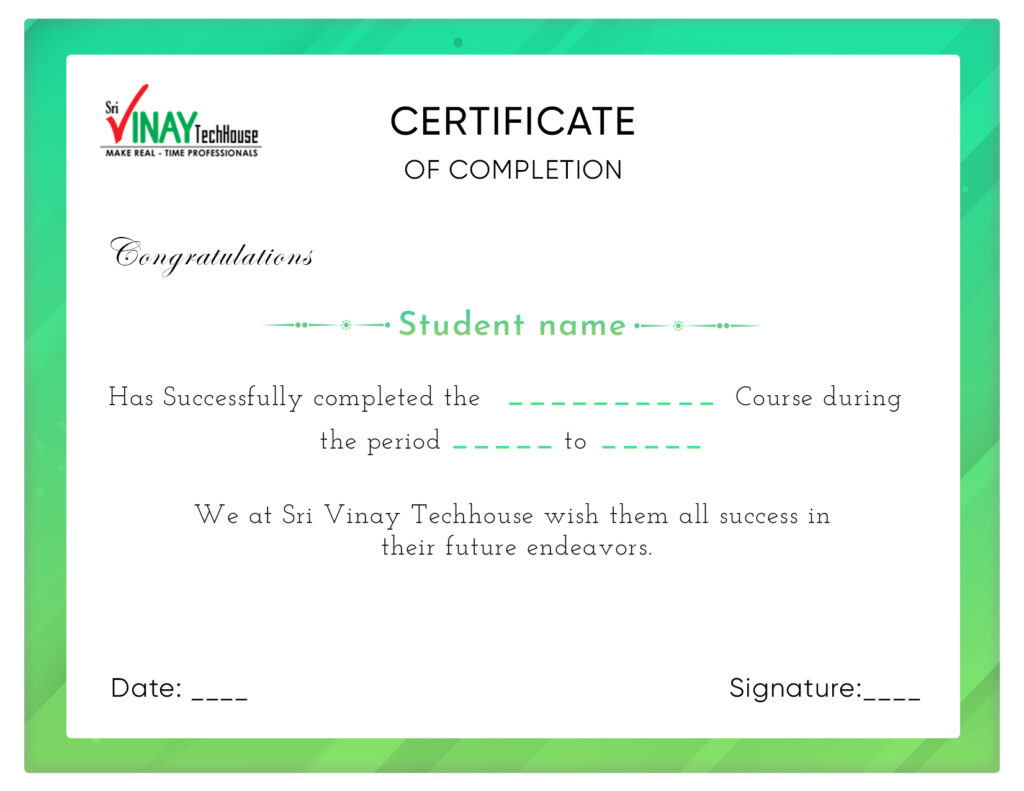
Lorem ipsum dolor sit amet, consectetur adipiscing elit. Ut elit tellus, luctus nec ullamcorper mattis, pulvinar dapibus leo.
Our Student Say!
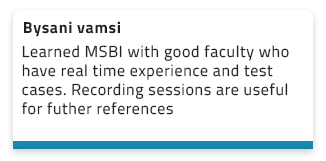
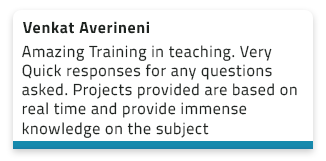

Our Learners Work At






